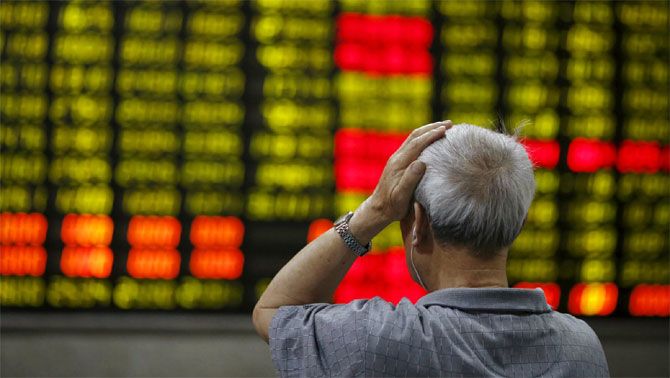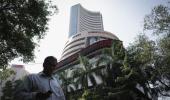High turnover, along with low delivery volumes, signals heightened trading activity and a lack of faith in the market direction.
Market players suggest traders trend to square up positions when there is no clear trend in the markets, which leads to lower delivery.
Sundar Sethuraman reports.

Delivery-based volumes continued to slide last year, even as the benchmark indices touched new highs.
According to experts, investors have taken to squaring up a large portion of their trades intra-day, to avoid bearing large losses on their trade or to book small profits, rather than carry over their position to the next day.
Market players added that falling delivery-based volumes were a sign of a bearish undercurrent in the market.
Delivery-based trades have been declining since April 2019.
For November, they stood at 33.2 per cent, even as the average daily cash market turnover for the month surged past Rs 44,000 crore.
For the first two weeks of December, the delivery percentage stood at 30.6 per cent, while the daily cash turnover for the period was Rs 35,913 crore.
If the delivery percentage for December stays at the current levels, it would be the lowest seen in the last 10 years.
Over the last 14 years, the monthly cash market turnover has been in excess of Rs 40,000 crore on only six occasions.
High turnover, along with low delivery volumes, signals heightened trading activity and a lack of faith in the market direction.
Market players suggest traders trend to square up positions when there is no clear trend in the markets, which leads to lower delivery.
A bullish market, on the other hand, would result in higher delivery, given that traders would be more confident of carrying forward their trades.

"As soon as the market develops any directional momentum, as is the case with the current market, speculative activity goes up. Second, mutual fund (MF) inflows are waning and this is hitting cash equities delivery in the market. MFs have been the most active participants in the cash market. When MF flows recover, you will see more delivery activity as opposed to more speculative activity in the futures and options," said Saurabh Mukherjea, founder of Marcellus Investment Managers.
The indices remained volatile throughout last year on account of a bunch of domestic concerns and a few global issues.
Globally, an uncertain Brexit, US-China trade tensions, and fears of global economic slowdown have worried investors for the major part of the year.
On the domestic front, rising instances of corporate default, moderate earnings growth, and sluggish economic growth have been major concerns.
The GDP grew at 4.5 per cent in the September quarter -- its weakest growth in over six years.
Fears pertaining to the health of financial firms have added to the uncertainty.
Domestic issues continue to worry even as global headwinds have eased after the UK general elections and a deal between the US and China.
Market players say a sustained uptick in delivery-based volumes could be a signal for improved sentiment.
"Once the conviction returns that there is genuine economic support for the rally, delivery volumes will come back," said Mukherjea.











